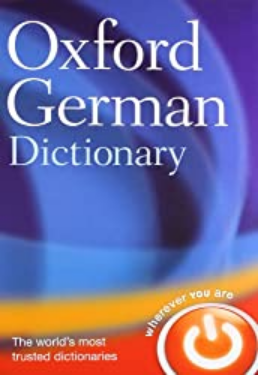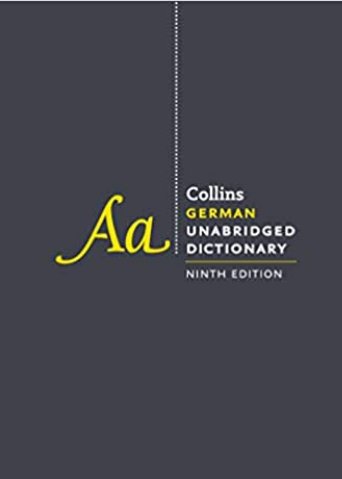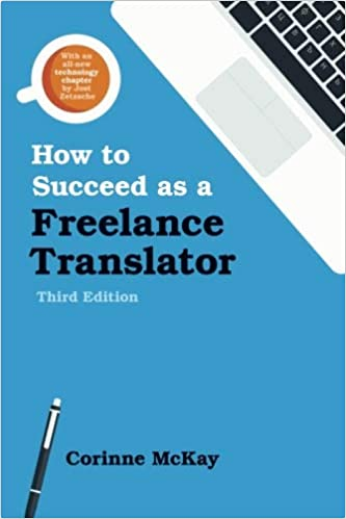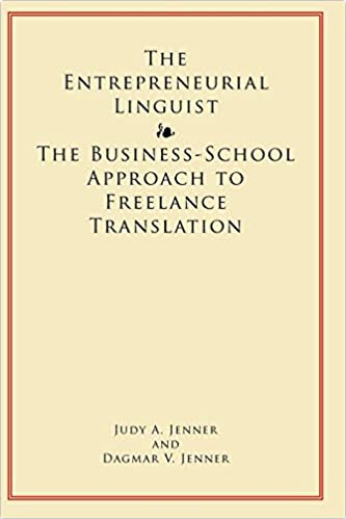- Home ›
- Buying Translation ›
- Charging for Translation Jobs
Charging for translation jobs
A guide through the maze of character, word, line and page rates!

Whether you're a translator or looking to commission
translation work – you need to know how translation jobs are charged.
In principle, it’s simple – you pay according to the length of the translation.
The problem is agreeing on the unit of measurement:
- Character (with or without spaces)
- Word
- Line
- or even Page
My experience for our German–English combination is that by far most translation jobs are charged either on a per word or a per line basis.
In continental Europe my queries are more often for line rates, but in the UK and North America I'm frequently asked to provide a per word rate.
So you need to know how the two compare.
Charging translation jobs by SOURCE or TARGET text?
Just one more complication to consider first - which text are we using as the basis for our price calculations?
For a German to English translation:
- the German text is our SOURCE text (Ausgangstext), and
- the English translation is our TARGET text (Zieltext).
Obviously, if you want a fixed price before you give the go ahead for the translation, pricing needs to be on the basis of the source text.
Do note, this will have an impact on pricing – in my experience, English translations can be up to 10% shorter than the German original.
Charging translation jobs by line
So what's in a line?
According to the official European standard DIN 2345:
1 Line = 55 Characters (incl.spaces) in the Target Language (TL)
Some translators or agencies will specify 50 or even 45 characters per line, but 55 seems to be more common.
In my experience, most continental European agencies charge by DIN line, and it's how I invoice the majority of my clients.
Calculation is easy: clicking on the word count displayed bottom left in any Word document brings up a Word Count analysis, stating the number of pages, words, characters (no spaces), characters (with spaces), paragraphs, and lines.
To calculate the number of lines in your document, simply take the total number of characters (with spaces) and divide by 55.
1 Line = Total Characters (incl. spaces) / 55
For PPTs and other document formats, special word count software is available (e.g. Anycount, Practicount.)
Calculating words vs. lines
The tricky bit starts when we try comparing rates for words and lines.
How many words are there in a line?
Well, assuming a line is 55 characters with spaces, we generally calculate that:
German text: 1 Line = roughly 8 words
But as English words tend to be a little shorter (nothing really comparable to Rechtsschutzversicherungsgesellschaften – insurance companies providing legal protection – the longest German word in everyday use according to the Guiness Book of World Records), it means we get more of them in our 55 character (with spaces) line.
On average:
English text: 1 Line = roughly 9 or 10 words
That means, a translation will cost less if charged by the source (German) text rather than the target (English) text – a factor for both translator and client to consider!
Comparing translation service costs
Translation associations are very coy when it comes to recommending rates or publishing surveys of member rates. Access is often limited to members and I'm not permitted to reproduce them here.
A rough guide offered by the Austrian Federal Economic Chamber (www.wko.at) around 2010 (yes, 2010) to buyers of translations stated that, for a standard DIN line translated by one of its members, you can expect to pay anything between €1.20 and €1.80, excluding tax, and depending on the language combination.
This is not an official recommendation and nor are these fixed prices.
But the translation market is becoming more competitive, and rates are generally regarded as under pressure rather than rising rapidly.
TIP! If you're buying language translation services regularly then you'll normally benefit greatly from using the same translator. As well as providing consistency across your texts, your translator will often agree a lower rate if you can guarantee them a set number of jobs over a specific time frame.
"What does it cost to translate a page of A4?"
This might seem a silly question at first, but a page is actually another "official" unit of measurement.
As usual, we need to be clear about the definition of a page, because when a client submits 20 A4-sized pages of text for translation they can be surprised when they receive a quote giving a page count of 25, or 12, or 40, etc. pages.
For the EU Directorate General for translation:
1 Page = 1500 Characters without spaces.
That's good enough for me, but it's not a unit of measurement I use.
Word and line rates will include...
- If your rate is quoted by an agency, then it should include the translated text being checked over by a second, qualified translator in that particular language pair, before you receive it.
- Unless otherwise specified, a freelance translator working on their own will probably quote less. Their quote will not include a checking by a third party.
Don't forget to add VAT / sales tax (if applicable).
Expect to pay extra for....
Additional charges are often made for translation jobs with:
- Turnaround within 24 hours (anything from +30% to +100%)
- Producing over 2,000 words / 250 lines per day
- Working over the weekend
- Particularly difficult texts needing extensive research
- Difficult formats (standard formats = MS Word, PowerPoint, Excel)
Other methods of pricing translation jobs
- Minimum charges (Mindestübersetzungspauschale) for translation jobs:
Whether your text is 10 or 1,000 lines in length, every translation entails administrative work - filing, recording, printing, emailing, billing, accounting etc..
So it is usual for translators to charge a minimum rate for a short, one-off translation – usually equivalent to their standard hourly charge.
But translators are usually pretty flexible and keen to maintain good client relations, so if you have a series of small translations which need doing over a short-ish time span, many will be happy to combine these into a single job, chargeable by the overall total line length.
- Hourly rates
Where the length of the document bears little relation to the work required, e.g. for making alterations to a text, or proofreading texts translated by another translator, charging at an hourly rate is usually fairer.
Other examples include where a translation demands a significant degree of creative English writing. Charging by the hour rather than by line more accurately reflects the work involved.
I did this recently for a prayer,
and earlier this year a book of poems and creative prose.
Whatever your translation job, translation can be a major cost factor for a business. Make sure you're not paying for more than you need – check out my 10 Top Tips On Successfully Commissioning German Translations.
And if you're looking for a German translator, feel free to contact me!
Joanna
German Translation Tips & Resources
- Home ›
- Buying Translation ›
- Charging for Translation Jobs

Joanna Scudamore-Trezek
I'm a German to English translator living and working in Vienna, Austria. I turn German texts into clear and accessible English, allowing clients to present their stories, ideas and information to a completely new audience. My business and marketing clients rely on me to get their message across clearly and effectively. How can I help you today?














